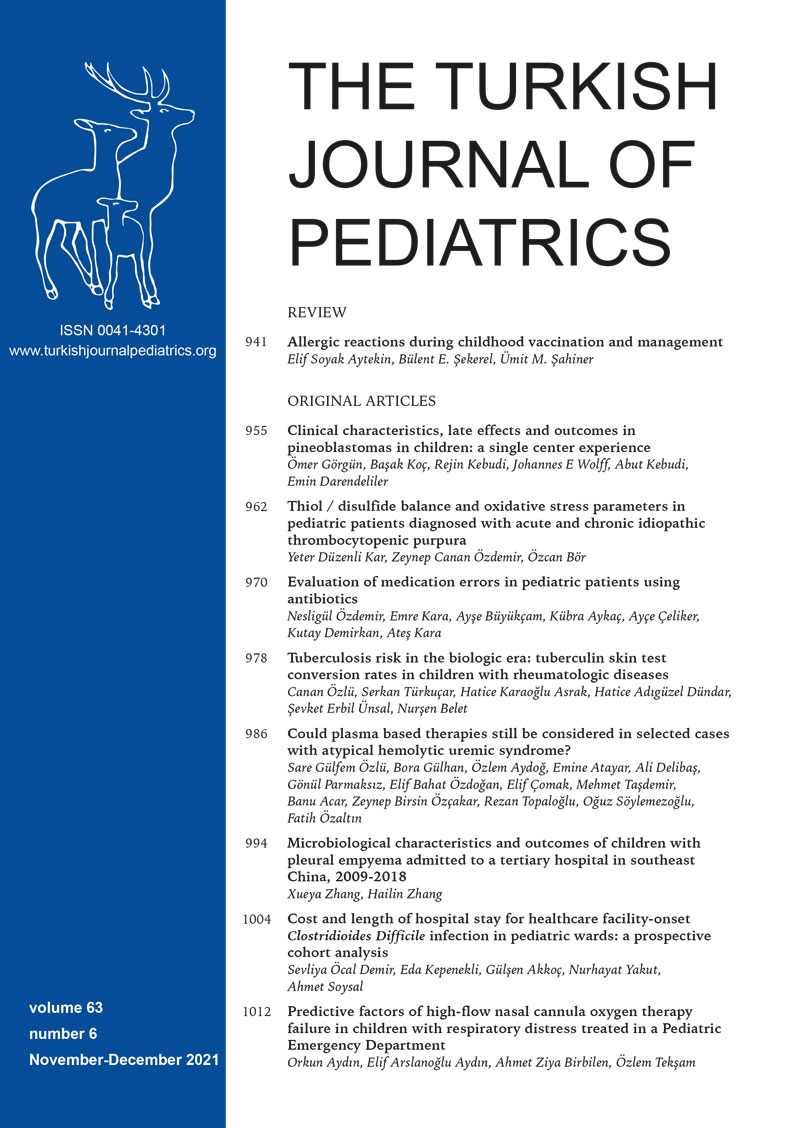Abstract
Background. Primary spinal, intradural, extramedullary Ewing sarcoma (PSIEES) is exceptionally uncommon. Here, we present an interesting pediatric case with a PSIEES diagnosis confirmed by the presence of a specific fusion protein in the tumor tissue and who then developed a cerebellar recurrence. We also reviewed the PSIEES cases in childhood reported in the literature.
Case. An 8.5-year-old boy was admitted to a local hospital with a one-month history of severe back and limb pain, and inability to move his lower limbs. Physical examination revealed paraparesis in the lower extremities. Spinal MRI revealed multiple intradural extramedullary masses at the L2-L3, L4-5 and L5-S1 levels. He underwent surgery and near total excision of all three masses were performed. Histopathological diagnosis of Ewing Sarcoma was confirmed with EWS-ERG gene rearrangement. The patient was treated according to EuroEwing chemotherapy protocol. A total dose of 4500 cGy radiotherapy was applied to the tumor location at L2-S1 paravertebral region. Eighteen months after the end of treatment, a mass in the left cerebellar hemisphere was determined. Gross total excision was performed. Histopathological examination of the tumor showed Ewing sarcoma. Radiological screening revealed isolated central nervous system recurrence. A total of 4500 cGy radiotherapy was applied. He is on a second-line treatment consisting of gemcitabine and docetaxel without any evidence of disease.
Conclusions. Ewing Sarcoma with spinal intradural region in childhood is very rare. We could only find 17 pediatric cases reported in the literature. Neurological findings occur earlier in tumors of this region. The prognosis is worse than other extraosseous Ewing sarcoma.
Keywords: Ewing family of tumors, cord compression, extraosseous Ewing sarcoma, intradural extramedullary tumors
Copyright and license
Copyright © 2021 The Author(s). This is an open access article distributed under the Creative Commons Attribution License (CC BY), which permits unrestricted use, distribution, and reproduction in any medium or format, provided the original work is properly cited.














